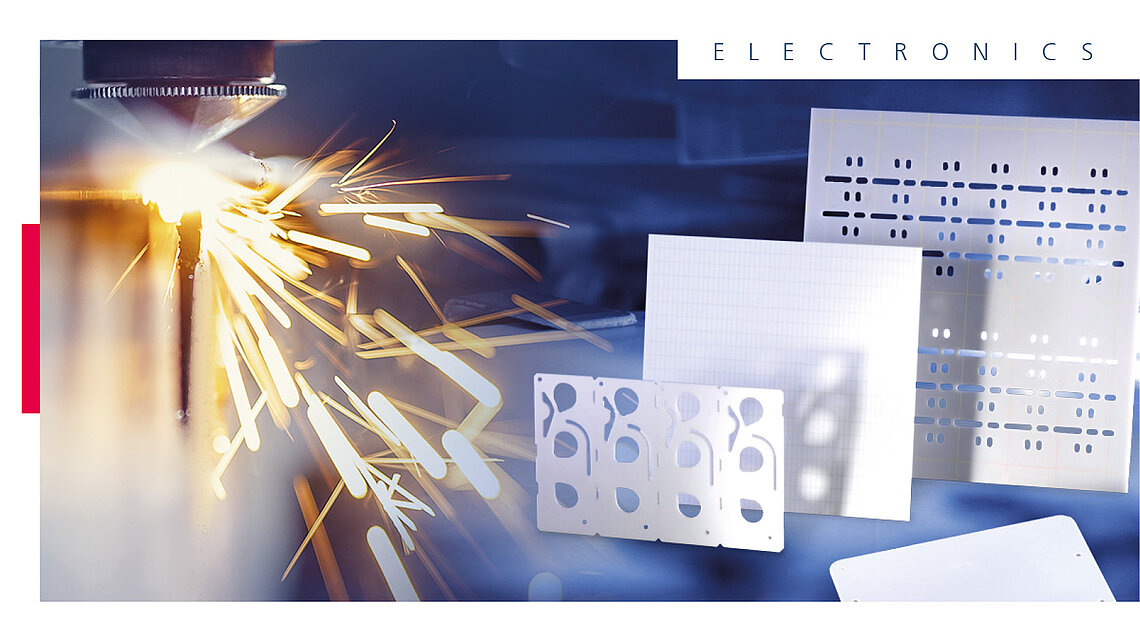Fibre lasering of ceramic substrates for highest quality standards
CeramTec deploys more than 100 laser heads in its production facilities worldwide enabling quick and flexible reactions to customer requirements. From single unit to mass production, even the smallest contours can be produced in high precision without any problems.
Whether it is e-mobility, smartphones, or wearables, electrical components such as chip resistors or circuit carriers need to decrease in size and at the same time have a higher power density. This means that high-performance ceramics, which are used in many applications such as printed circuit boards or insulating parts, must also meet these new requirements. This trend demands for higher flexibility and precision in production as well as the highest quality of the product.
The lasering of ceramic substrates is a well-established technology for processing. CO2 lasers are usually used to create the smallest borings, blind holes, or break lines in ceramic substrates, which results in the material being removed by heating, melting and evaporation. This form of processing is accurate, economical and maintains its precision even after numerous repetitions. However, partial melting of the edges can occur, which leads to vitrification of the material. For example, vias can become partially or completely clogged. Given the increasing trend for miniaturisation, the contour sizes produced by CO2 lasers are sometimes not fine enough for products that have to become smaller and smaller.
Need for alternative laser processes
Fibre lasers solve this problem. Unlike CO2 lasers, the beam focus of fibre lasers is much smaller and the beam quality significantly higher. As a result, the high beam intensity in the focus enables reliable insertion of required structures with absolute precision at the same time. Thanks to the reliable steering of the beam, the spot size remains the same, resulting in significantly sharper contours. For example, the cones of the blind holes can be reduced by more than 50 percent and the laser track width can also be halved.
3D lasering
This new technique is particularly suitable for producing complex 3D structures, including simple basic geometric shapes such as triangles as well as polygons, or complex polygon shapes. Cavities of any kind can be created, and even complicated components are easy to produce, with even the finest cavities not creating any problems. The advantages are particularly evident in series production when thin wall thicknesses of barely 120 µm are required.
Lasered substrates also available for online self-configuration
To react quickly and flexible to customer requirements, the CeramCreator self-configuration tool, which was launched at the beginning of June, enables product customisation in self-explanatory and intuitive steps. Among other things, the entire product portfolio of substrates (master plates) and lasered substrates is available online. As a special feature, product specifications and requirements for substrates can be provided by uploading a CAD file. Based on this, the CeramCreator tool generates a 3D model and automatically checks for technical and geometric feasibility. In addition, potential issues regarding product requirements can be solved together with the customer using a 3D visualisation. This process automation reduces turnaround times, resulting in time and cost savings.
Discover our free info paper on new laser processing strategies for ceramic substrates.
More background information about CeramCreator can be found on our homepage.
